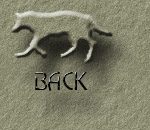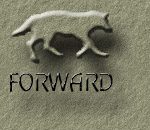Vulpes
vulpes - Red fox
Range: Wide distribution
in North America and Eurasia
Size: 20
- 30 lb (9 - 14 kg)
Vulpes vulpes,
the red fox, is one of the most widely distributed of all wild canids.
It occurs naturally over much of the northern hemisphere, ranging throughout
most of North America, Europe and Asia. It is also found in areas
of northern Africa. Additionally, it has now spread across much of
the Australian continent since its introduction by man in the 1800s.
Red foxes are extremely adaptable, and inhabit a very wide variety of habitats.
The only type of environment that they generally avoid is desert.
The red fox is the largest member of the genus Vulpes, with males
from northern regions attaining weights of 30 lb (14 kg). However,
a weight of less than 20 lb (9 kg) is average for the species. Colouration
in the red fox, as its name implies, is basically of a rufous hue, though
the coat is somewhat variable depending on the region. Very dark
coloured (melanistic) red foxes are known from areas of northern Europe,
and there have been occasional accounts of black red foxes in England.
Albinistic individuals have also been recorded. The diet of the red
fox consists primarily of rodents, birds, insects, and other small animals,
as well as a rather large amount of plant material, particularly fruits
and berries. Red foxes are typically born in litters of less than
6. Both parents cooperate in caring for the young. In the wild,
a red fox's life expectancy is about 3 years, but in captivity they have
lived for as long as 12. |
 to
go to the Red Fox Gallery.
to
go to the Red Fox Gallery.

